Lia Perjovschi (b.1961) is a post-conceptual artist with a multidisciplinary body of work oriented towards knowledge and historicization. She began her activity in the ’80s with a series of performative experiments in her own apartment in Bucharest. After 1990, Lia Perjovschi tackled the lack of access to information on contemporary art on a global scale, which was an initial hindrance in her artistic development, creating a corpus of knowledge permanently performing its own educational institution. In the 1990s, when access to information was still very limited, Lia and Dan Perjovschi transformed their studio in Bucharest into a learning space for the local art scene. Their collection of magazines, books, catalogues, and flyers about international exhibitions became the first locally accessible archive containing information on contemporary art. Before the end of the ’90s, the CAA (Contemporary Art Archive) had accumulated a considerable amount of material and became an essential resource on a cultural scene still deprived of information. From 1999, the CAA began operating under the name of the Center for Art Analysis, later complemented by the Museum of Knowledge. After being evicted from their Bucharest studio, the institution continued its work in Sibiu, in the Perjovschis’ home. Driving forward the project is Lia Perjovschi’s passion for knowledge in the field of contemporary art, stemming perhaps from the traumatic pre-1989 isolation.
I would first like to thank you for having this conversation with me. I am interested in art practices oriented towards collecting, archiving, research, and curating. The ways in which artists historicize/self-historicize are both interesting and necessary. Where does this preoccupation stem from in your case?
It stems from need, from all that I never had, all that I had wished would exist (an archive/collection/platform), from the desire to have a sort of selection of witnesses to the times (collections – a globe, plastic bags with pictures on them; art collections – postcards and other kinds of cards, objects from museums I’ve visited…).
Before 1989, I wondered why nobody made exhibitions around concrete topics (there were only a few banal ones, around portraiture, the body, the city, and other such things), why there were no debates going on, no criteria for analyzing exhibitions, at least in my experience (I failed my university entrance exam six times, with no explanation. Under communism there were very few places, less than 100 in the country, while now there are over 1000, if not more, just in the big cities. There was corruption, you had more connections in high places than there were places for students. I requested a re-mark and only got an answer once, in which they brought up subjectivity… I wasn’t convinced. There are rules, criteria for analysis that go beyond personal taste. I studied art in school, high school, and university for 14 years.). After 1990 I was asking around why these things didn’t exist. I got long stares but no replies… On my trips to the west for exhibitions I took part in or to visit great exhibitions (documenta in Kassel, the Venice Biennale, etc) I had contact with all kinds of information. I realized that I did not know anything about contemporary art, the period between the ’50s and the ’90s. I wanted to pass on what I had found out so I would have somebody to talk to and debate with. I gathered materials (flyers, postcards, because they bore interesting images/works or texts, and also important books and catalogues – initially I would only photocopy texts in libraries, I didn’t have the money to buy anything).
Self-historicization… I began experimenting, and I wanted to see what is seen, what the other I sees as a subject in action. I didn’t know that what I was doing was performance art, body art, and happenings until after 1990… and then it’s hard to find the idea, to make the work… you become invested in it…
What kind of history do you collect?
At first there were only fragments (as much as I could cover) of the history I had taken part in, then ideas and information about interesting characters to add to timelines… various tactics of survival, ideas, gestures, works that say something about the times we are living in, the local/global and professional context.
How did you organize the information you collected?
Into areas of interest, once I found out about performance, video, installations… I tried to find books on these topics, and then on art education, curating, criticism, management, critical theory, cultural studies. I also tried to organize it thematically, alphabetically, by country.
In Alina Șerban’s interview published in Knowledge and Context, you bring up the interest in understanding your own practice in a broader context and the desire for “those in the West to understand” your work. Do you feel better understood now?
Yes.
In this same text, you mention a problem raised by Austrian curator Georg Schöllhammer regarding self-colonization with information about the dominant cultural scenes. I would like to bring this up again here, as I was not convinced by your answer. I understand the self-colonization of Romanian cultural thought as Alexander Kiossev writes about it, as a complex, long-term phenomenon that cannot be seen from a single vantage point but that can become an essential tool for critical and self-critical thought. I think that the self-colonization with western values is also the essence of modernism, and later of the local historical avant-gardes and neo-avant-gardes. Even the most radical artistic practices were often borrowed from dominant cultures and adapted to the local context, and whatever critical stand was taken against this cultural self-colonization often overlapped with far-right discourse. I have condensed this topic a lot because I want to pose this question again in the context of the complex issue of how local culture attempts to “catch up” with western culture. I therefore believe that your work could potentially be understood within this – I repeat, complex – phenomenon of self-colonization. Why do you dismiss this potential interpretation from the start?
I don’t dismiss it, but… I am trying to articulate this “but.” My archive, in an eastern setting, is different from those in Poland and Hungary, it is not just about Romanian artists in a Romanian context, it is an international database in which, of course, I integrated artists from Romania and the former Eastern Bloc (who I found in exhibitions, books, or catalogues) and which covers the transition period (which I myself witnessed). My research has certain conclusions, and I have identified differences. Georg asked me, in a friendly manner, if my archive, my publications, are not themselves a form of self-colonization… they are a bit (in the sense you suggested, something complex, time-based, seen in context) and at the same time they aren’t… Yes, I have brought in models from outside so that we didn’t waste time, for we needed to have western-esque institutions sooner or later to be able to collaborate (I was coming from an interrupted history, with its periods of synchronization, rupture, and isolation). Something must have developed in this culture because it was not dead, there was more art than theory. In my case, I used information to find words/tools to be able to communicate. At first I did everything for my own needs and then I thought about my fellow artists. After an initial contact with the other (the west), a tentative identification, what was expected was theory, and we had to identify ourselves.
There are multiple generations. Thinking only of recent history, of those I knew: the ’70s generation, Geta Brătescu, Ion Grigorescu, Ana Lupaș, and others… who travelled abroad, were influenced by what they’d seen; the ’80s generation, which was left in the dark (literally and figuratively, with just a few movies and books available – the Meridiane/Globus series, publishing contemporary writers, helped us get an idea of what was going on abroad). Some people in my generation were raised without “parents,” we met Romanian experimental artists after 1990: Geta Brătescu in 1990, Ion Grigorescu in 1992, I only learned a bit about Dada at university, and went more in-depth only much later. I was not exposed to too many exhibitions as a student (I am from Sibiu, I went to high school in a small town). When I was a student, the newer catalogues were stolen by certain connoisseurs so that nobody found out anything about biennials… I had been warned by the librarian when I went looking for magazines. I didn’t find anything interesting in libraries abroad either, perhaps I was again too late. I bought the magazines Secolul 20 and Arta long after the revolution (not for the current information, but to find out what had been, and also to add to the archive). In my case, I invented/experimented as western artists did in the ’50s (there’s that delay we were talking about). Yes, I invented the wheel. Yes, I was influenced by the nothing around me, by mail art, Hungarian television that I watched without knowing the language (using a Hungarian dictionary), experimental theater, by the fact that I had worked in theater before going on to college… Gili Mocanu said that he is part of the “Taschen Generation.” Around the 2000s is when the catalogues published by Taschen started appearing in stores, and professors encouraged appropriation (from what he told me and what I could see in others’ work). Perhaps that is closer to the colonization I had in mind; information is one thing, copying is another. I don’t focus on things specifically Romanian (traditional shirts, folklore, icons), but on a truth that can be universal, albeit with local nuances, on acts in which one can read subtle things that you couldn’t put into words… In some Romanian PhD theses by people who had foreign supervisors, I could read a perfect understanding of the theoretical side, but when they attempted to give local examples, they either didn’t fit or felt forced.
You claim your archive is constantly being reread. How do you work with your material?
Every reading/rereading of the material (intentional or unintentional) opens new doors, offers me new ideas (like a book which you read multiple times at different points in time and always feels almost completely different). I look for something that I believe the context demands.
What role does this collection play in your art practice? Do you identify as an archivist artist or a collector artist?
I am an artist, researcher, collector, archivist, annalist, theorist, image curator, and idea curator… I recycle…
How you relate to this history? Or, better yet: how do you place yourself within this history?
As I like – not just locally. I want to know a lot in the hopes of finding something that relates most to me, I want to create meaning for the other, to leave something better than I found it, and I use art towards this purpose.
I assume systematizing this collection takes up a lot of your time.
Oh, yeah. It was a lot of hard work. It took its toll on me (I had developed chronic fatigue), but I managed to put together a summary of the interesting things I found. I also have a glossary of terms from contemporary art and critical thought, some general chronologies (still pertaining to art), a history of art from modernism to the present, translated into Spanish, which many western professors, artists, and curators use and which was reprinted at the Royal College in London. A curator from MoMA also has it on her desk, and she even reprinted it for an exhibition at the Walker Art Center in Minneapolis and the Jumex Foundation in Mexico City. All my materials are scattered throughout the country and beyond, in places where I’ve been (I’ve had over 700 exhibitions, lectures, and workshops), at various institutions, libraries, in print or pdf, and I think the notion Nicolas Bourriaud develops in Post Production – using that which is produced – has become my art. When I get tired of art, I try something different, like the Museum of Knowledge (comprising more diverse fields of knowledge). Because they took our studio in Bucharest I’m now revisiting my projects in Sibiu, where we spend most of our time. The conditions there are different. There is a condensed version of the Archive and the Museum of Knowledge at the Astra Library in Sibiu, on the fifth floor, taking up half the reading room. And here, online, we have the Telescopic Space of Knowledge.
You often talk about self-historicizing and revisiting: do you miss performance and experimental art? Do you still have time to do performance experiments with your own body outside your work on this enormous corpus of information you have gathered? Or is this the performance: you have become the institution itself?
My experiments have changed in time. I began with the camera, then continued with a discreet/gestural dialogue, and then, after I had soaked up enough information and found my own words, I began one-on-one dialogues (in the studio), lectures (for a few months in 2000/2001 I used to moderate a 3-hour cultural talk show called Totul la vedere, produced by Ruxandra Garofeanu – it was every Saturday on TVR 1 and my co-hosts were Dan Perjovschi and historian Adrian Cioroianu), teaching, guiding, coaching, empowering. If I had to label what I’m doing, I would call this performance art… Everything is in motion, everything is being redefined…
I believe that performance art has an advanced age… I had a statement in this vein at the Zona Timișoara Festival in 2003.
In the exhibition organized by Ivan Gallery at Spike Art Magazine’s space in Berlin, your exhibited works are personal responses to the new global reality of the Covid pandemic. How has the pandemic affected you?
I don’t know yet… I was expecting something huge (like a war). This invisible virus has turned the world upside down. I think it is in the process of causing huge, profound changes. I have pretty much stopped travelling, which has allowed me to rest, clean the house and my computer, read, work (as what I do is basically freelance), to think… For the most part, I will continue doing what I have been doing till now, and if the conditions force me to change, I will change – I am an artist, I am used to looking for solutions, to have a plan B, C, and D. We will see if art is really an irrelevant profession or not.
What are you working on at the moment?
The latest flyer for tranzit and also painting. I need color, I need to lose myself, there’s just too much noise, too much anxiety, restrictions…
In Romanian, I find myself using the masculine form of the word artist [artist – m, artistă – f, n.tr] by default – it’s a habit I have been trying to shake off for many years. How do you identify yourself, what language do you prefer and why?
It depends how it sounds in context. Artist is the generic term, though grammatically I’m an artistă. I have avoided positioning myself as a feminist artist. I am a feminist, but with a “lowercase f”, I don’t want to be confined to the feminist box, I am a citizen of this world – yes, I am a woman, Romanian, from Sibiu, shaped by 30 years of living in Bucharest and travelling the world, by communism, transition, capitalism…
To what extent are you interested in gender in your practice?
My experience plays an important part in it, I cannot simply deny it… I am who I am. In certain projects from my archive I practice a certain common-sense political correctness. I try to take this new reality into account, to understand new perspectives. These are interesting times, and we need tools to help us rethink almost everything.
These years of collecting have seen a lot of visual material: is the history of recent art male? Have you ever thought about this aspect when selecting your material?
Yes, ever since I met Kristine Stiles (artist, theorist, curator, and professor at Duke University, an important person in my life) in 1992, I’ve been a feminist. Until then I’d been nonconformist, unruly, I could see and sense something, but it wasn’t clear to me what (under communism it seemed that women had equal standing to men – it seemed). I couldn’t stand March 8, National Women’s Day, when restaurants were full of “self-respecting” women – only then, for just one day… Besides that, I drew my own personal conclusions from what I saw and experienced. This was not something I found in psychology or philosophy books. Feminism became a topic only in the 1990s.
Yes, it’s something that has preoccupied me. I searched and kept my eyes open. I don’t know how good I am statistically, but, really, it’s only in recent years that we’ve seen books recuperating the women of art history… and that’s just in the west! Still, I must admit that first I always look at the image/work (I am a visual person, I first read the image, then the text). I had to make selections: if what I found did not fit in with what I was looking for, I would store it in a different folder for later. For a few years I have been trying to recover the other continents – it’s really an explosion of information. I rely on other researchers and their books, because I don’t have the budget to travel. Even here (in Romania) I don’t have the chance to see too many things first-hand. Many people ask me if I know this or that artist (people think I know everything… it’s not impossible). Chance plays an important role in this research. I’ve tried not to miss out on important stuff.
Translated by Rareș Grozea
POSTED BY
Valentina Iancu
Valentina Iancu (b. 1985) is a writer with studies in art history and image theory. Her practice is hybrid, research-based, divided between editorial, educational, curatorial or management activities ...


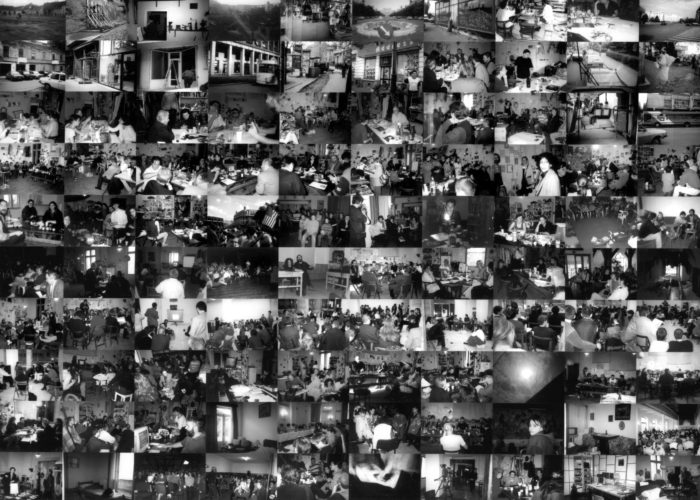
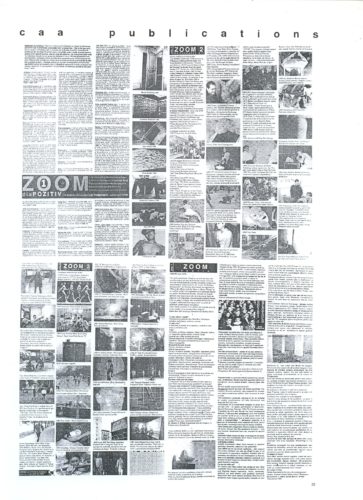
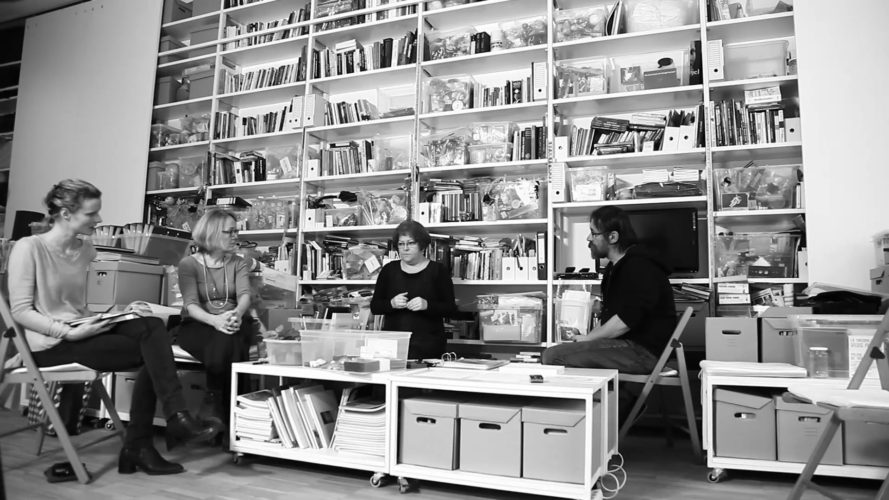
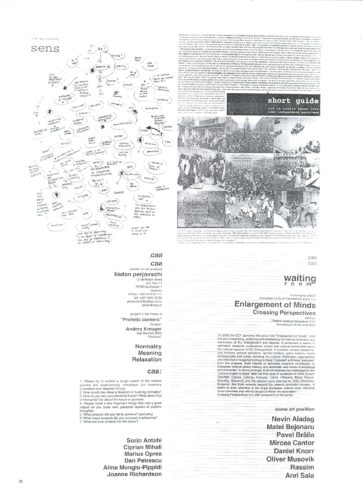
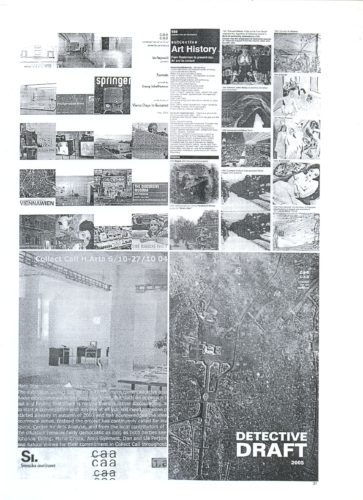

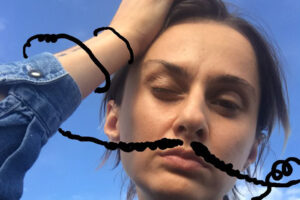
Comments are closed here.